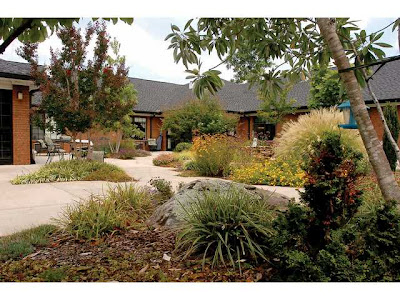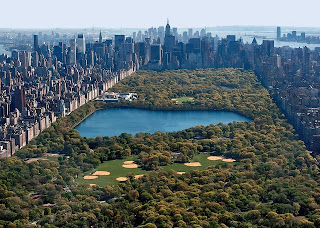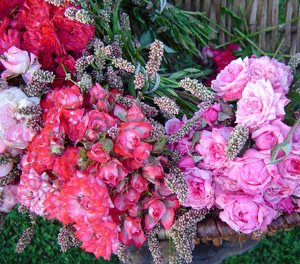A new article from InformeDesign‘s latest issue of Implications, by Jeff Rosenfeld, Ph.D., “Senior Housing Globalized,” discusses changes, trends, and recent developments in senior housing in China, Japan, India, and elsewhere in the Pacific Rim.
Built Works
New Article from InformeDesign’s Newsletter
September 25, 2008
“Therapeutic Gardens of the Delaware Valley,” ASLA Field Session
September 17, 2008
Healing Gardens in Prisons
September 2, 2008
Gainesville Times article on healing gardens
August 25, 2008
Healthy Monday: Greenery good for patients, health facilities
Sometimes, nature is the best medicine.
More health care facilities are using the outdoor environment as a way to help both patients and visitors feel better. Known as “healing gardens” or “therapeutic landscapes,” these green spaces have proven to be so beneficial that hospitals and nursing homes have begun incorporating them into their construction plans.
Northeast Georgia Medical Center’s two upcoming additions to its main campus, the Women & Children’s Pavilion and the North Patient Tower, both include healing gardens in their design. And at least one local nursing home, The Oaks at Limestone off Limestone Parkway, has been using a therapeutic garden for several years. There’s a bubbling fountain in the interior courtyard, and colorful native flowers planted throughout the grounds. Strategically placed bird feeders almost guarantee a display of wildlife throughout the day.
“The families really, really love it,” said administrator Dorothy Foster. “The water fountain is really soothing. When residents are able to go outside, they love just sitting and enjoying the sound of the water.” Foster said the nursing home’s employees also find it a relaxing place to take a break.
Naomi Sachs, executive director of the Therapeutic Landscapes Resource Center in New York, said studies have shown that when patients have a view of the outdoors, they need less pain medication and have shorter hospital stays. This knowledge has brought about a revolution in health care design, Sachs said. “In the 1960s, when hospitals got air conditioning and began closing their windows, they kind of turned their backs on the outdoors,” she said. “(But) a lot of research has been done by environmental psychologists, starting in the mid-1970s. It shows that people respond to a wealth of greenery, a really lush environment (rather than to just a few boxed plants).”
“In a hospital setting, where people are very much not in control of their own bodies and their own routines, and there is a huge lack of privacy, naturalistic settings can be an antidote to that,” Sachs said. “It’s a distraction to whatever problem the patient or visitor or caregiver may have.”
While the gardens are beautiful, they’re far more than just a pleasant amenity. “Savvy hospitals are realizing that it helps their bottom line,” Sachs said. The environment also may play a role in why people choose one facility over another. If they had a positive experience, whether as a patient or as an employee, they’re likely to recommend that place to others. “The fact that people are happier can become a marketing tool,” Sachs said. “More and more health care centers are starting to catch onto that.”
“Isn’t every garden a healing garden?” Part I
August 23, 2008

The Highest Praise: A Patient Recommends Woodwinds Health Campus
June 25, 2008
Field Trip! Open Garden Days, Oregon Burn Center
“Join us for Open Garden at the Oregon Burn Center on Monday, July 14, 2008 and Monday, August 25, 11:30 – 1:00. Watch the growth of this four-year-old award-winning garden. We will celebrate the recent story of the garden in Landscape Architecture Magazine, April 2008. http://www.legacyhealth.org/documents/Gardens/OBCgarden.pdf
Enjoy garden tours, gardening education, nature craft activities and more. Bring a picnic lunch to enjoy in the garden. Bring your camera for great photos.
Garden is located at 3001 N. Gantenbein on the Emanuel Hospital campus. Enter through the two garden gates marked with balloons. This is a secured garden and only open to the public for these two special event dates.
For more information, please call 503-413-6507.”
Landscape Architecure Magazine published an article about the garden in April, written by UC Berkeley Professor Emerita (and my mentor) Clare Cooper Marcus: “For Burn Patients, A Place to Heal.” The garden was designed by Landscape Architect Brian Bainnsonof Quatrefoil, Inc. and Horticultural Therapist Teresia Hazen.
Herbarium: Healing Garden and Horticultural Therapy in Santiago, Chile
June 20, 2008
Ferns Unfurling
May 27, 2008
Agave at the Huntington
May 20, 2008













